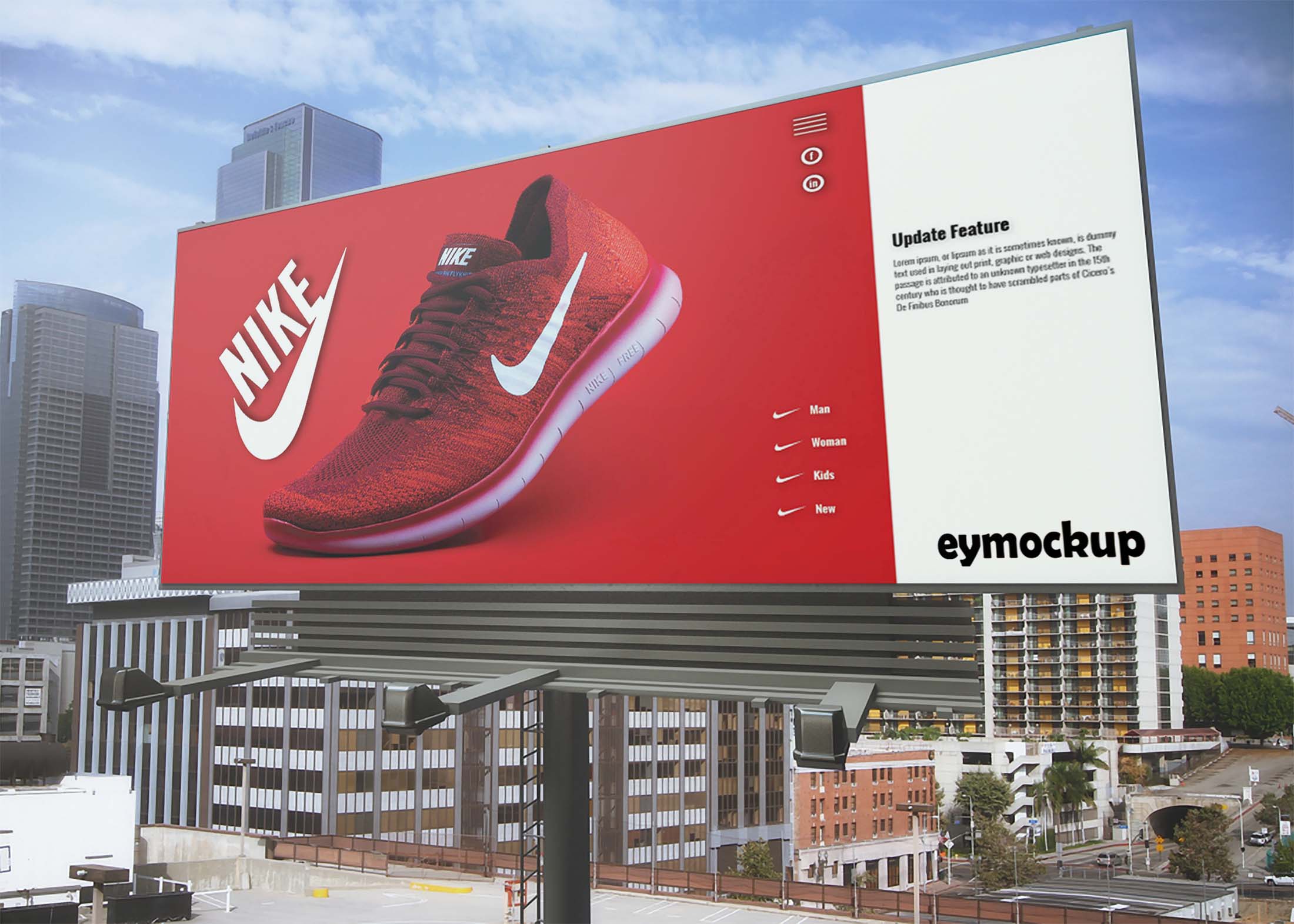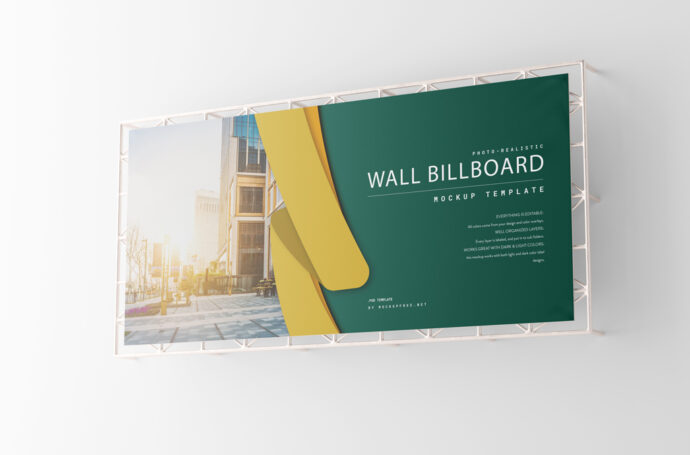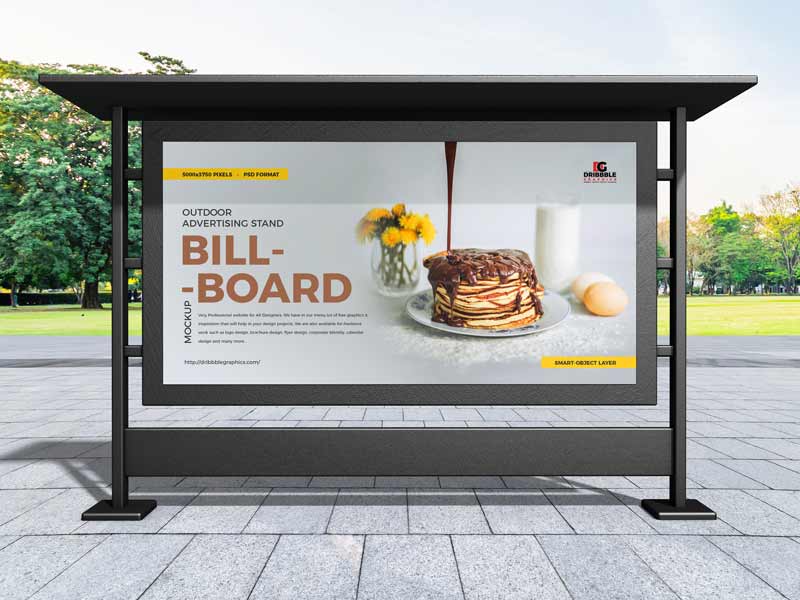Billboard design
 Here are the key steps to creating an effective graphic design billboard:
Here are the key steps to creating an effective graphic design billboard:
- Define your message: Before you start designing, it’s important to have a clear understanding of the message you want to convey on your billboard. What do you want to promote or communicate to your target audience? Make sure your message is concise and easily understandable.
- Know your audience: Consider who your target audience is and what will resonate with them. Is it a local community, commuters, or tourists? Understanding your audience will help you choose the right visuals, fonts, and colors that will capture their attention and make an impact.
- Choose a bold headline: Your headline should be short, bold, and easily readable from a distance. Use a font that is simple, clear, and large enough to catch attention. Avoid using multiple fonts that may clutter the design.
- Use compelling visuals: High-quality visuals can be very effective in grabbing attention. Use images or graphics that are relevant to your message and resonate with your audience. Avoid cluttering the billboard with too many visuals or text, as it may distract from the main message.
- Keep it simple: graphic design billboard should be simple and easy to understand. Avoid cluttering the design with too much information or unnecessary elements. Use a limited color palette to keep the design clean and focused.
- Include a call to action: What do you want your audience to do after seeing your billboard? Include a clear call to action such as a phone number, website, or social media handle, and make sure it is prominently displayed in the design.
- Consider visibility: Billboards are often viewed from a distance and at high speeds, so make sure your design is visible and legible from a distance. Use high contrast colors, large fonts, and simple graphics to ensure that your message is easily readable.
- Test your design: Before finalizing your billboard design, test it by looking at it from different distances and angles to make sure it’s easily readable and visually appealing. You can also get feedback from others to ensure that your design is effective.
Remember, less is more when it comes to billboards design. Keep it simple, bold, and focused on your message to create an impactful and effective billboard design that will capture the attention of your target audience.
Can I make a billboard in canva?
 Canva is a popular online graphic design tool that allows users to create various types of visuals, including billboards, posters, social media posts, and more. Here are the general steps to create a billboard in Canva:
Canva is a popular online graphic design tool that allows users to create various types of visuals, including billboards, posters, social media posts, and more. Here are the general steps to create a billboard in Canva:- Sign up or log in to your Canva account.
- Once logged in, click on “Create a design” and search for “Billboard” in the search bar.
- Choose a billboard template from the available options or start with a blank canvas.
- Use Canva’s drag-and-drop interface to add elements to your billboard, such as text, images, shapes, and background.
- Customize your billboard by changing the text, font, colors, and images according to your preference. You can also upload your own images or use Canva’s extensive library of free or paid stock photos.
- Experiment with different design elements, layouts, and styles until you are satisfied with the overall look and feel of your billboard.
- Once you have finished designing your billboard, click on the “Download” button to save your design in your preferred file format (such as PNG, JPEG, or PDF) and resolution.
- You can then take the downloaded file to a printer or billboard designs advertising company to have it printed and displayed as a physical billboard.
Remember to review Canva’s terms of service and licensing agreements to ensure that you are using their platform in compliance with their guidelines and policies.
Do graphic designers create billboards?
 Graphic designers are often responsible for creating billboards. Billboard design is large outdoor advertising displays that are typically used to convey a message, promote a product or service, or raise brand awareness. Graphic designers play a crucial role in designing the visual elements of billboards, such as the layout, typography, imagery, and color schemes, to create an impactful and visually appealing message that can be easily understood by passersby.
Graphic designers are often responsible for creating billboards. Billboard design is large outdoor advertising displays that are typically used to convey a message, promote a product or service, or raise brand awareness. Graphic designers play a crucial role in designing the visual elements of billboards, such as the layout, typography, imagery, and color schemes, to create an impactful and visually appealing message that can be easily understood by passersby.Graphic designers who work on billboards need to consider various factors, including the target audience, the location and size of the billboard, the message being conveyed, and the overall branding of the company or product being advertised. They may also need to work closely with other professionals, such as copywriters, marketing managers, and printers, to ensure that the final billboard design is effective and aligned with the overall marketing strategy.
In addition to static billboards, graphic designers may also create digital billboards, which use LED or other digital technologies to display dynamic and interactive content. Digital billboards may require additional skills in motion graphics and animation, as well as an understanding of technical specifications and limitations associated with digital displays.
Overall, graphic designers can indeed be involved in creating billboards, using their artistic skills, creativity, and knowledge of design principles to create visually compelling and effective advertising messages on a large scale.
How can I make my billboard more attractive?
 Design billboard more attractive involves several key elements that can help grab attention, convey a clear message, and create a memorable impact. Here are some tips:
Design billboard more attractive involves several key elements that can help grab attention, convey a clear message, and create a memorable impact. Here are some tips:- Clear and concise message: Keep your message simple and easy to understand. Use minimal text and make sure it can be read quickly from a distance. Avoid clutter and use a bold and legible font that matches your brand’s personality.
- Eye-catching visuals: Use high-quality, visually appealing images or graphics that are relevant to your message and target audience. Consider using contrasting colors to make your billboard stand out from its surroundings.
- Branding: Incorporate your brand’s logo and colors to create consistency and reinforce brand recognition. Make sure your branding elements are prominently displayed and easy to identify.
- Call to action: Include a clear and compelling call to action that prompts viewers to take a specific action, such as visiting your website, making a purchase, or contacting you. Use action-oriented language and create a sense of urgency.
- Location and context: Consider the location and context of your billboard when designing it. Take into account the surroundings, the target audience, and the viewing distance. Tailor your message and design to resonate with the local culture and demographics.
- Unique and creative approach: Think outside the box and try to come up with a unique and creative concept that will make your billboard stand out from others. Use humor, creativity, or a provocative message to capture attention and leave a lasting impression.
- Proper sizing and placement: Ensure that your billboard is sized appropriately for its location and can be easily seen from a distance. Consider the height, width, and placement of your billboard to maximize its impact and visibility.
- Lighting and special effects: If possible, consider incorporating lighting or special effects to make your billboard more dynamic and attention-grabbing, especially during nighttime. LED lights, motion graphics, or other visual effects can add an extra layer of attractiveness to your billboard.
Remember, the goal of a billboard is to capture attention quickly and leave a memorable impression. By focusing on a clear message, eye-catching visuals, branding, a compelling call to action, considering location and context, using a unique approach, proper sizing and placement, and incorporating lighting or special effects, you can make your billboard more attractive and effective.
 Is billboard an example of graphic design?
Is billboard an example of graphic design?
Graphic design billboards can be considered an example of graphic design, as they often involve the use of visual elements, typography, and layout to create a visually appealing and effective advertisement. Graphic design is the art and practice of creating visual content for various mediums, such as print, digital, and multimedia, to communicate messages and convey information visually. Billboards, which are large outdoor advertising structures, often utilize graphic design principles to create eye-catching visuals that capture the attention of passersby and convey a message or promote a product or service. This may involve the use of colors, imagery, typography, and layout to create a visually appealing and impactful design that effectively communicates the intended message.
What size is a billboard design?
 Billboard sizes can vary depending on the location, type of billboard, and local regulations. However, the most common standard size for a traditional roadside billboard in the United States is 14 feet high by 48 feet wide. This is often referred to as a “14×48” or “fourteen by forty-eight” size. Other common billboard sizes include 10×30 feet, 10×40 feet, and 20×60 feet. Digital billboards may have different dimensions, often with varying aspect ratios and pixel resolutions, depending on the manufacturer and specifications of the digital display. It’s important to check local regulations and specifications from the billboard company when designing a billboard to ensure compliance with their requirements.
Billboard sizes can vary depending on the location, type of billboard, and local regulations. However, the most common standard size for a traditional roadside billboard in the United States is 14 feet high by 48 feet wide. This is often referred to as a “14×48” or “fourteen by forty-eight” size. Other common billboard sizes include 10×30 feet, 10×40 feet, and 20×60 feet. Digital billboards may have different dimensions, often with varying aspect ratios and pixel resolutions, depending on the manufacturer and specifications of the digital display. It’s important to check local regulations and specifications from the billboard company when designing a billboard to ensure compliance with their requirements.
Frequently Asked Questions (FAQs)
How do I choose the right color scheme for my graphic design billboard? Selecting a color scheme involves considering your brand identity, target audience, and the emotions you want to evoke. Conduct thorough research and choose colors that align with your brand’s personality and resonate with your audience.
What role does simplicity play in graphic design billboard success? Simplicity is key in billboard design, considering the limited time viewers have to absorb the message. A clean and straightforward design ensures quick comprehension and a more significant impact on the audience.
Is it necessary to hire a professional graphic designer for a billboard? While it’s possible to create your design, a professional graphic designer brings expertise and an understanding of the medium. Their knowledge can significantly enhance the effectiveness of your billboard, making it a worthwhile investment.
How can I ensure my graphic design billboard is readable from a distance? Opt for legible fonts, high-contrast color combinations, and a clear hierarchy of information. Regularly test your design from a distance to ensure readability, and avoid clutter that may distract from the main message.
Are there any restrictions on content for graphic design billboards? Local regulations may impose restrictions on content, such as the use of explicit imagery or certain types of messages. Before finalizing your design, research and comply with any guidelines set by local authorities.
What trends are currently dominating the graphic design billboard landscape? Dynamic and interactive elements, such as augmented reality experiences, are gaining popularity. Additionally, the use of bold typography and minimalistic designs continues to be a prevailing trend in graphic design billboards.
Conclusion
As we conclude our exploration of Graphic Design Billboards, you now possess the knowledge to transform urban landscapes with your creative prowess. From understanding the basics to mastering the technicalities, the journey of creating impactful graphic design billboards is an exciting venture. So, go ahead, let your creativity flow, and watch as your designs turn the streets into an artistic canvas.

